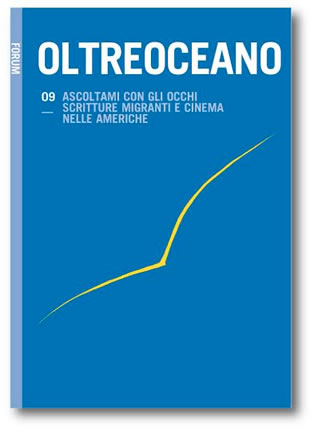Forme etiche ed estetiche del rappresentare. La vicenda di Sacco e Vanzetti nel cinema e nel teatro testimoniali
Keywords:
Sacco, Vanzetti, teatro, cinema, Montaldo, KartunAbstract
Nell’agosto del 1927, i due anarchici italiani Nicola Sacco e Bartolomeo Vanzetti vennero giustiziati sulla sedia elettrica perché accusati di due rapine e di un duplice omicidio. Nei sette anni tra l’arresto e l’esecuzione si sviluppò un’imponente mobilitazione internazionale per la revisione del processo che evidenziava non solo la loro innocenza ma la volontà delle autorità statunitensi di compiere un gesto di rappresaglia politica, in parte prodotto non solo dall’isteria americana per il terrore dei radicali ma soprattutto dalla xenofobia. E Sacco e Vanzetti erano entrambe le cose: anarchici libertari e immigrati italiani. Il lavoro si concentra sul film “Sacco e Vanzetti” (1971) di Giuliano Montaldo, con Gian Maria Volonté e Riccardo Cucciolla, e sull’omonima opera teatrale (Sacco e Vanzetti. Drammaturgia sommaria di documenti sul caso) dell’argentino Mauricio Kartun (1992).
Ethical and Aesthetic Forms of Representation. The Story of Sacco and Vanzetti in Testimonial Theatre and Cinema
In August 1927, the two Italian anarchists Nicola Sacco and Bartolomeo Vanzetti were executed in the electric chair, because were accused of two robberies and a double murder. A black page in the history of the United States. During the seven years between the arrest and the execution, there exist a massive international mobilization for a new trial, which showed not only their innocence but the will of the US authorities to carry out an act of political retaliation, produced by xenophobia. And Sacco and Vanzetti were Italian immigrant anarchists and libertarians. The paper focuses on the film “Sacco and Vanzetti” (1971) by Giuliano Montaldo, Gian MariaVolonté and Riccardo Cucciolla, and on the play with the same title (Sacco y Vanzetti. Dramaturgia sumaria de documentos sobre el caso) of the Argentinean writer Mauricio Kartun (1992).
Downloads
References
Aliprandi, M. (1974): Corruzione al Palazzo di Giustizia. Film.
Bellini, M. (2008): L’Orrore nelle arti. Prospettive estetiche sull’immaginazione del limite. Milano: Lucisano.
Bertrand, D. (2007): La scrittura dell’esperienza estrema. In G. Marrone, N. Dusi & G. Lo Feudo (Eds.), Narrazione ed esperienza. Intorno a una semiotica della vita quotidiana. Roma: Meltemi.
Buñuel, L. (Dir.) (1961): Viridiana. Film.
Buñuel, L. (Dir.) (1973): II fascino discreto della borghesia. Film.
Buñuel, L. (Dir.) (1977): Quell’oscuro oggetto del desiderio. Film.
Burke, E. (Dir.) (1992): Inchiesta sul Bello e il Sublime, 1757. G. Sertoli & G. Miglietta (Eds.). Palermo: Aesthetica.
Del Fra, L. (Dir.) (1977): I giorni del carcere. Film.
Fo, D. (2004): Morte accidentale di un anarchico, 1970. Due Atti. F. Rame (Ed.). Torino: Einaudi.
Gatti, A. (1966): Chant public devant deux chaises électriques.
Giorgetti, M. M. (1999): Il caso Sacco e Vanzetti. Sipario, 599, pp. 52-70.
Dubatti, J. (2001): Apéndice [contiene entrevista: 138-164]. In M. Kartun, Sacco y Vanzetti. Dramaturgia sumaria de documentos sobre el caso (pp. 129-165). Apéndice y edición a cargo de Jorge Dubatti. Buenos Aires: Adriana Hidalgo, S.A.
Hrelia, F. (1998): Per parlare la lingua del teatro. A Rivista anarchica, 248, s.p.
Hrelia, F. (1999): Un lavoro di restauro. Intervista a Mauricio Kartun. Sipario, 599, p. 53.
Kartun, M. (Dir.) (1992). Corrupción en el palacio de justicia. Adattamento da Ugo Betti.
Kartun, M. (Dir.) (1994): Volpone. Adattamento da Ben Jonson.
Kartun, M. (Dir.) (1998): El pato salvaje. Adattamento da Ibsen.
Kartun, M. (1999): Sacco e Vanzetti. Drammaturgia sommaria di documenti sul caso. Trad. di A. Cancellier. Sipario, 599, pp. 52-70.
Kartun, M. (2001): Acerca de Sacco y Vanzetti. Dramaturgia sumaria de documentos sobre el caso. In M. Kartun, Sacco y Vanzetti. Dramaturgia sumaria de documentos sobre el caso (pp. 3-6). J. Dubatti (Ed., Apéndice). Buenos Aires: Adriana Hidalgo.
Kartun, M. (2001): Sacco y Vanzetti. In M. Kartun, Dramaturgia sumaria de documentos sobre el caso (pp.7-127). J. Dubatti (Ed., Apéndice). Buenos Aires: Adriana Hidalgo.
Lumet, S. (1960): The Sacco-Vanzetti Story. Film.
Luzi, M. (1990): Sulla traduzione teatrale (pp. 97-99). Testo a fronte, 3. Milano: Guerini.
Montaldo, G. (Dir.) (1971): Sacco e Vanzetti. Film.
Montani, P. (2009): La funzione testimoniale dell’immagine. XXI secolo. In Enciclopedia Italiana Treccani, Comunicare e rappresentare (pp. 477-489). Roma: Istituto della Enciclopedia Italiana Treccani. Recuperato da www.treccani.it
Vancini, F. (Dir.) (1973): Delitto Matteotti. Film.
Vincenzoni, L. (2005): Pane e Cinema. Il racconto di una vita straordinaria e avventurosa consacrata al mondo del Cinema. Roma: Gremese.
Vincenzoni, L. & Roli, M. (Dir.) (1960): Sacco e Vanzetti.
Downloads
Published
How to Cite
Issue
Section
License

This work is licensed under a Creative Commons Attribution-NonCommercial-ShareAlike 4.0 International License.
The authors undertake to comply with the following conditions, which are considered accepted at the time of submission of their contributions.
The sending of a text implies that it is unpublished and not submitted to be published elsewhere.
1. If accepted, the author shall confer on the publisher the right to publish and distribute it both in paper form and in the online electronic edition. The published articles will be downloadable and made available in open access.
2. Provided that it correctly indicates that the first publication took place in the journal Oltreoceano. Rivista sulle migrazioni the author has the right to: a) reproduce the article in separate extracts or collected in a volume; b) publish the article on their personal website or teaching site provided that these sites are of a non-commercial nature; c) deposit the article in online archives of a non-commercial nature, linked to the institution they belong to or as part of projects for the non-commercial dissemination and open access of scientific works.
The use of contributions by third parties, for commercial or otherwise unauthorized purposes, is not allowed. The publisher declines all responsibility for the unauthorized use of the material published in the journal.












